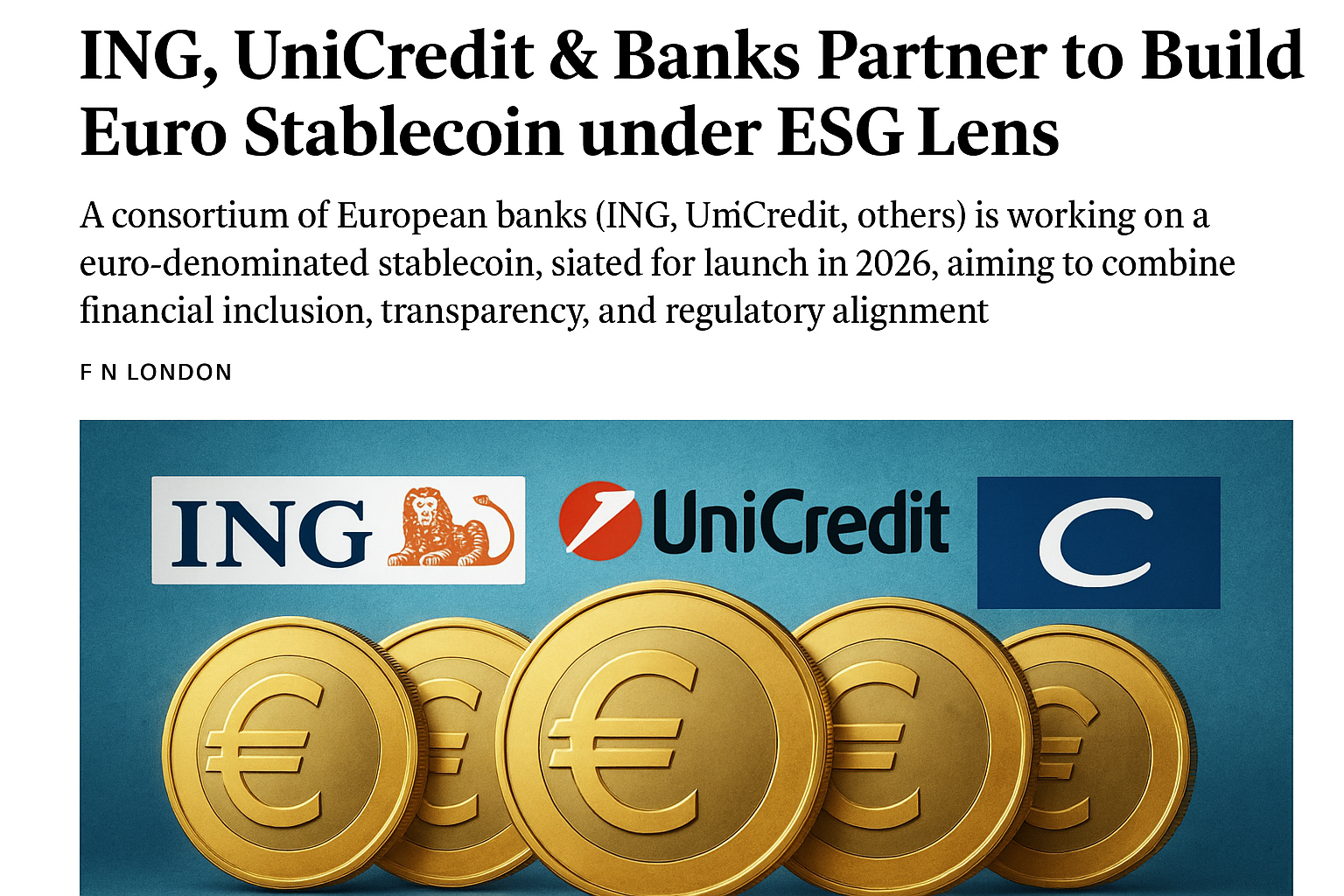The European financial landscape is on the cusp of a historic transformation. A consortium of leading European banks—including ING, UniCredit, and several undisclosed partners—has announced plans to develop a euro-denominated stablecoin, set for launch in 2026. Unlike many existing stablecoins that have grown out of the private fintech or crypto sector, this initiative carries a distinctly institutional signature, aiming to balance innovation, regulation, and sustainability.
A Stablecoin with a Purpose
At its core, the stablecoin will be pegged to the euro, providing a secure and transparent digital asset designed to serve individuals, businesses, and cross-border commerce. While stablecoins are not new, what sets this project apart is its focus on environmental, social, and governance (ESG) criteria. By embedding ESG standards from inception, the banks aim to create not just another digital payment tool but a responsible financial infrastructure aligned with Europe’s broader green transition and social inclusion goals.
The initiative comes at a time when central banks, regulators, and financial institutions are wrestling with how to modernize the financial system while minimizing risks. With the European Central Bank actively exploring a digital euro, the banking consortium’s stablecoin could act as both a complement and a catalyst for mainstream digital asset adoption across the continent.
Why ESG Matters in Digital Finance
Sustainability has become an unavoidable priority in every industry, and banking is no exception. The integration of ESG considerations in a digital euro stablecoin is groundbreaking for several reasons:
-
Environmental Footprint – Blockchain solutions are often criticized for their energy consumption. This project is expected to use energy-efficient, low-carbon blockchain infrastructure to ensure minimal ecological impact.
-
Financial Inclusion – A euro-backed stablecoin could provide easier, faster, and cheaper access to digital finance for unbanked or underbanked communities within Europe and potentially beyond.
-
Transparency and Trust – By aligning with ESG standards, the project sets a new benchmark for accountability in digital assets, countering skepticism often tied to crypto markets.
Regulatory Alignment as a Competitive Edge
One of the biggest hurdles for stablecoins has always been regulation. By involving established European banks from the outset, the project is expected to achieve strong alignment with EU financial regulations and frameworks like MiCA (Markets in Crypto-Assets Regulation).
This not only provides credibility but also positions the euro stablecoin as a safe alternative to privately-issued digital currencies from tech giants or non-European providers. The consortium’s effort could ultimately reinforce European sovereignty in digital finance, ensuring that the euro remains competitive in a global economy increasingly influenced by digital dollars, yuan, and privately-issued stablecoins.
Potential Use Cases
-
Retail Payments – Consumers could pay with a digital euro stablecoin both online and in physical stores, with instant settlement.
-
Cross-Border Transactions – Businesses could save time and reduce costs when transferring funds across European borders.
-
Green Financing – ESG-driven token frameworks may enable green bonds, carbon credits, or impact-linked financial products to be integrated seamlessly into the ecosystem.
-
DeFi and Institutional Finance – The stablecoin could become a foundation for decentralized finance applications built with European compliance standards.
Looking Ahead: 2026 and Beyond
While still in development, the euro stablecoin project signals a shift in the narrative of digital assets. No longer confined to startups and crypto-native firms, the future of tokenized finance will increasingly be shaped by traditional financial institutions willing to innovate responsibly.
By 2026, when the stablecoin is scheduled to launch, Europe could have a dual system: a central bank–issued digital euro and a bank-consortium–issued stablecoin, both serving complementary purposes. Together, they may redefine the continent’s approach to money, payments, and sustainability.
The European banking sector is sending a clear message: digital finance must be inclusive, transparent, and sustainable. With ESG principles as its backbone, this euro stablecoin may well become a blueprint for how the world’s financial system evolves in the digital age.




